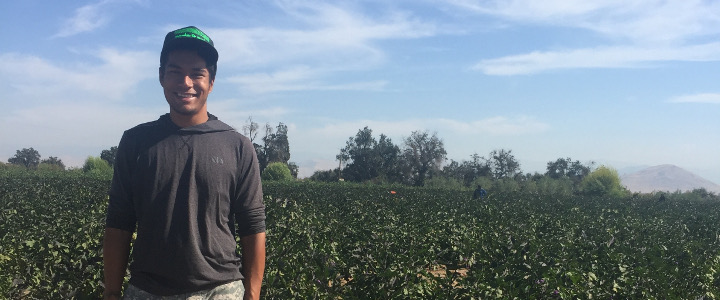Written by Leslie Hutchins
Spring 2018
After spending a majority of my undergraduate career heavily involved in food systems work at both Berkeley and Hawai’i, it was a great pleasure to end my senior year weaving together and reflecting on my experiences through the Food Systems Capstone course. I took on a research assistant position in the Diversified Farming Systems Lab this past fall, working with Aidee Guzman, an ESPM PhD student conducting socio-ecological work in the Fresno area, and was lucky enough to be able to continue to do more work with Aidee this spring for my capstone project. The Diversified Farming Systems Lab commonly works on plant- pollinator interactions at the local and landscape level under the purview of Dr. Claire Kremen.
My particular tasks in the lab this semester were to create educational materials for small-scale immigrant refugee farmers I am working with in the Central Valley, CA. Through previous interactions the lab has had with farmers, we’ve learned they would prefer learning through hands-on activities, not by looking at a screen or flipping through a lengthy manual. Thus, the educational materials developed will need to not only be educational, but engaging as well. I created materials revolving around topics that farmers have noted as being crucial to their day to day operations: How to use testing strips to measure soil nitrate and phosphorus concentrations in soil; measure soil pH; identify soil texture and understand its importance in farming; and integrate different farming practices that will help improve soil quality (e.g. cover-cropping). In addition to these topics, the student will also create activities that convey various aspects of Aidee’s PhD dissertation: What is Arbuscular Mycorrhizal Fungi (AMF)? What does it do for crops? What types of crops promote its growth? What types of farming practices promote its growth? How do you identify AMF under a microscope? All of these materials will then be translated into Spanish and Hmong, as the farmers that these materials are being made for are primarily from these backgrounds.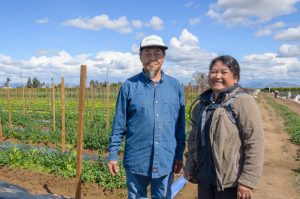
Prior to working in the Diversified Farming Systems Lab, I had never been to Fresno or the Central Valley as a whole. This is mainly because I grew up in Hawaiʻi, an island chain that isn’t particularly known for its agricultural production, importing 85% of the goods residents use. Driving across my island, I’d only see a relatively small proportion of land growing food, which always limited what I envisioned when it came to food production. My thoughts and perspectives about large scale agriculture and the Central Valley were solely constructed from what I had heard in my food systems minor courses, as well as documentaries and books, such as Food Inc. and Omnivores Dilemma. Thus, the picture I envisioned in my head wasn’t so positive to say the least. However, after spending some time in the Central Valley, I grew to love its landscape, history, and people. In particular, I grew to love the small-scale farmers, whom are responsible for a large portion of food production in the Central Valley, we worked with. I challenge everyone working in the food system to actually visit Fresno, walk around, and talk to farmers. It is not enough to simply cast the Central Valley into a gray “conventional bad agriculture” box and conduct research only in other parts of California. The Central Valley is a prominent part of California’s agricultural landscape and should be honored as such.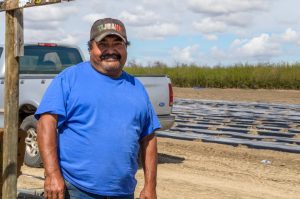
Although it was my first time seeing agriculture on a large scale, I was not entirely new to the food systems world. I spent my sophomore year at the University of Hawai’i at Mānoa conducting biophysical research in a Hawaiian cropping lab looking at how traditional agro-forestry mulches could be used in modern day agroecosystems. In addition to doing research, I held an internship at Paepae o He’eia, a traditional Hawaiian fishpond restoration organization that grows and contributes culturally significant fish to the Hawaiian community. I then found myself at UC Berkeley my junior year. Diving head first into the burgeoning food systems scene at Berkeley, I took several food systems classes—Agroecology, Sociology and Political Ecology of Agro-Foodsystems, and Biodiversity Conservation in Working Landscapes—and was a food justice fellow at UC Gill Tract Community Farm. Finally, this past summer I participated in an REU in Humboldt county looking to bridge Western and Indigenous perspectives in wildlife management. My project for the REU dealt with revitalizing traditional salmon fishery management for the Round Valley Indian Tribes. All of these experiences have imparted a lot of knowledge within me that I then took into my food systems capstone project.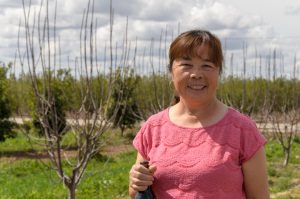
Environmental research, management, and outreach is commonly catered towards individuals from a Western background, leaving out those that come from other ethnic and cultural backgrounds. Being of Hawaiian descent and participating in food systems outside of the traditional Western paradigm, as I have noted in the paragraph above, I gravitated towards and was accustomed to creating educational materials for Latinx and Hmong farmers. Small-scale farmers in general are placed in a tough socio-economic position because of state and federal regulations, but these circumstances are further exasperated when these same farmers are from a minority immigrant background. How are immigrant farmers supposed to adopt the sustainable agricultural practices we advocate if they are explained in English and through a Western perspective?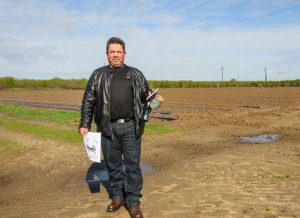
In all, I am very thankful for the opportunity to participate in the Food Systems Minor Program at UC Berkeley. Berkeley is truly at the forefront of the food movement, and has given me tremendous tools that I can now take out into the world. However, those partaking in food systems work at Berkeley must be cognizant of individuals from different backgrounds and different perspectives, not everyone who cares or is involved with the food systems comes solely from a Western background.

